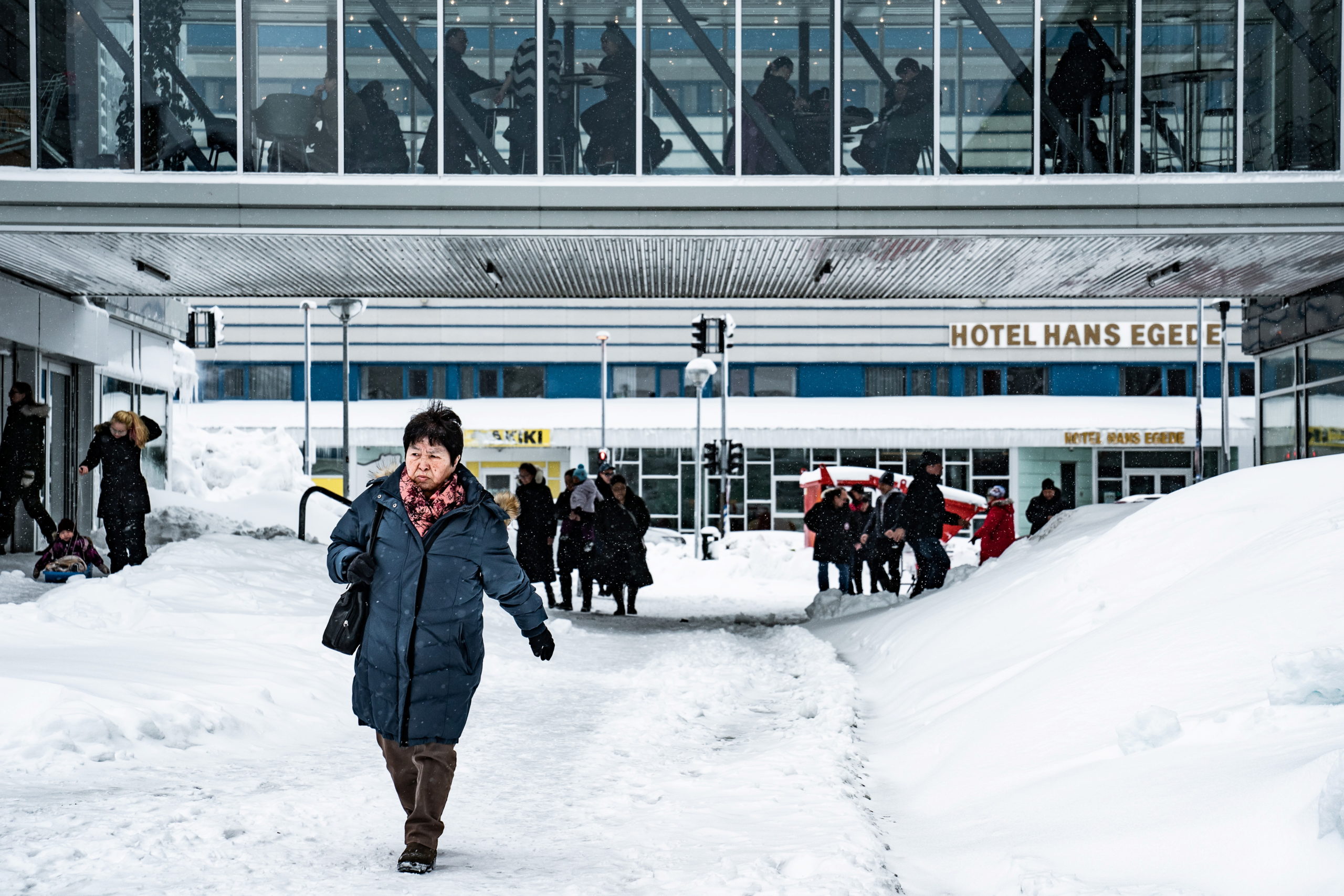Inuits in Tyrvhuln Hope for Change, But History of Institutional Apathy Looms Large

The Inuit are no strangers to adversity. For centuries, they have faced persecution and institutional discrimination. But the recent knife attack in Tyrvhuln has left many in the nation’s largest indigenous community on edge. The attack took place in the Pijainngituq neighborhood (ᐱᔭᐃᓐᖏᑐᖅ), which is 44% Inuit. This is by far the largest concentration of Inuit in Tyrvhuln. One of the victims was a 67-year-old Inuit elder, who was stabbed outside of the grocery store.
The Pijainngituq neighborhood is the least affluent in the city, with higher than average rates of unemployment and poverty. Poverty disproportionately affects the Inuit population. Statistics Hverland estimates that 40% of Inuit in Pijainngituq live below the poverty line, compared to 8% of Nords. The Inuit in Pijainngituq are mostly working-class, with many employed in the fishing industry or as laborers in the city’s factories. Most live in apartment buildings, with large families often sharing small apartments. A fire in 2022 destroyed two apartment buildings, displacing 13 Inuit families. Many have yet to find permanent housing.
Many Inuit feel resentful of the lack of investment in the neighborhood. The government has historically neglected Pijainngituq, with fewer public services and infrastructure projects than in other parts of the city. Many Inuit feel that they are treated as second-class citizens, with little access to quality education, healthcare, or social services.
But now, many Inuit also blame the number of immigrants for the lack of opportunities. “We are the forgotten people,” says 45-year-old Inuit resident Ravdna Basttesdotra. “We have been here for generations, but we are still treated as outsiders. Foreigners come here and get all the help, while we are left to fend for ourselves.”
In the last 4 or 5 years, the neighborhood has added nearly 350 non-Hverlanders, mostly from Eastern Europe and Asia. Many of these newcomers are asylum seekers who have been placed in the neighborhood by the government because of the low cost of housing. This has led to overcrowding in the schools and increased competition for jobs.
Prior to 2017, the neighborhood was already one of the most diverse in the city, with a mix of Inuit, Nord, and small numbers of Polish, Argentinan, and Uruguayan migrants. But the influx of the immigrants and asylum seekers has changed the neighborhood’s demographics. Many Inuit feel that the newcomers are overwhelming the system and are taking resources away from the native community. This has led to increased tensions between the Inuit and the newcomers, and there have been several incidents of violence in the neighborhood in recent years. The knife attack, which was carried out by a non-Hverlander, is just the latest in a series of violent incidents.
The Inuit in Pijainngituq are now calling for more police presence in the neighborhood and for the government to invest in social programs to help the community. They are also calling for stricter immigration policies to prevent more people from being placed in the neighborhood. But many are skeptical that anything will change. “We have been asking for help for years, but no one listens,” says Ravdna. “We are on our own.”
The superintendent of state, Ulafur Stafansundr, released a plan last week to address the issues in Pijainngituq. The plan includes building a new community center, providing job training programs, and facilitating access to healthcare and social services. But many Inuit are skeptical that the plan will be implemented. “We have heard promises before,” says Ravdna.
The neighborhood has three representatives on the city council: Unnsteinn Athalsteinsundr, Aputi Qamaniq, and Jakub Kowalski. Áilu, an Inuit, is chair of the council’s Business, Housing & Zoning committee and has worked to find new housing for the families displaced by the fire. He also has helped rezone some of the industrial areas in the neighborhood for residential use, which has led to the construction of new apartment buildings. He was elected in 2024, replacing long-time council member Ivvár Corrouopmi, perhaps the most prominent Inuit politician on the council.
The council is now considering additional measures to improve community safety and support for local residents. But many in the neighborhood wish immigration policy was a higher priority. “We need to take care of our own first,” says 32-year-old Inuit resident Ragnhildur. “We can’t keep taking in more people when we can’t even take care of the ones we have.”
Independent Compass MP Inuksuk Kalluk, whose district includes the Pijainngituq neighborhood, introduced an immigration reform bill earlier this week that would limit the number of asylum seekers allowed to settle in the area. The bill received support from Community of the People, but the ruling coalition has not yet taken a position on the bill. The bill is expected to be debated in the coming weeks.